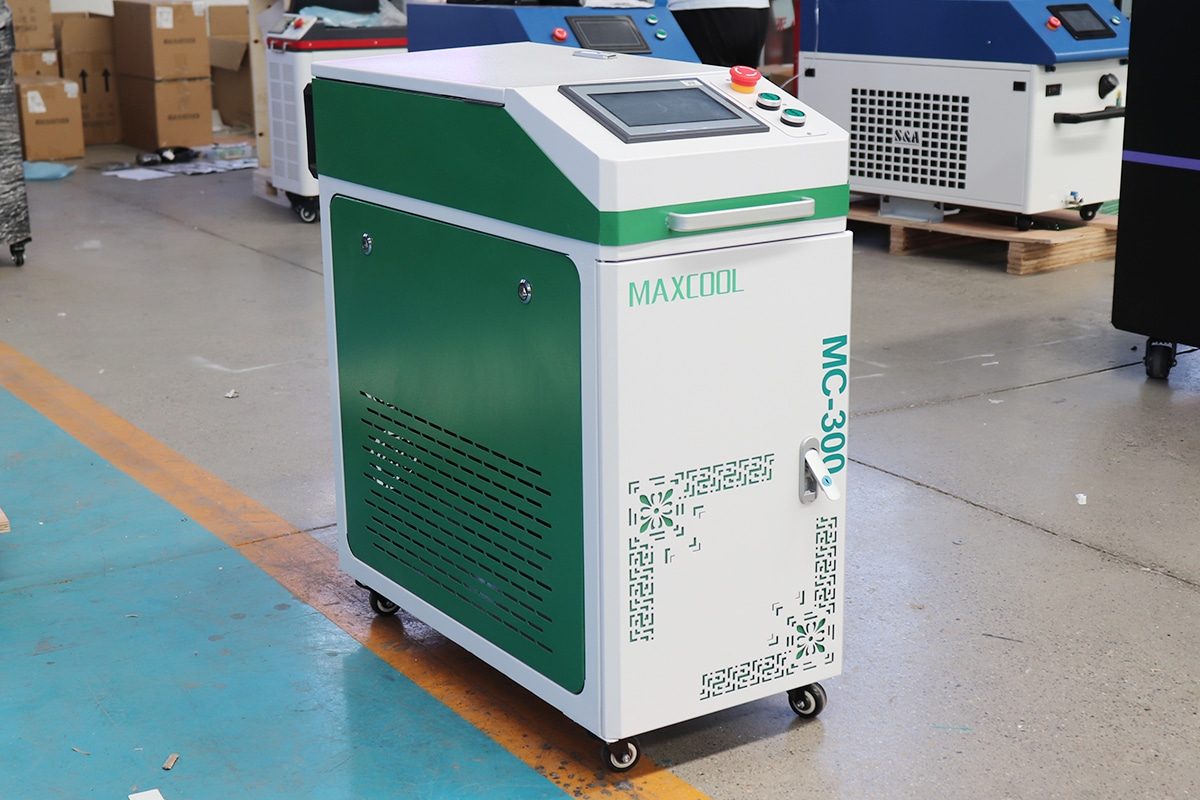
Understanding Pulsed Laser Cleaning
Key Parameters in Pulsed Laser Cleaning
Several key laser parameters affect the cleaning process:
- Pulse Duration: Shorter pulses (e.g., picosecond or femtosecond) reduce heat diffusion into the substrate, making them ideal for applications requiring high precision or involving heat-sensitive materials.
- Pulse Energy: Determines how much energy is delivered in each pulse. Higher pulse energies can remove thicker or tougher contaminants, but must be carefully managed to avoid substrate damage.
- Repetition Rate: The number of pulses per second (Hz or kHz). Higher repetition rates allow faster cleaning but increase average thermal load.
- Wavelength: The laser wavelength influences how energy is absorbed by different contaminants and materials. Common wavelengths include 1064 nm (Nd:YAG), 532 nm (frequency-doubled Nd:YAG), and 10.6 μm (CO2 lasers).
- Spot Size and Scanning Speed: The size of the laser beam on the surface and how fast it is scanned across an area control the energy density and coverage.
Types of Lasers Used
- Fiber Lasers: Highly efficient, compact, and capable of high peak power, making them ideal for industrial use.
- Nd:YAG Lasers: Well-established in pulsed laser cleaning, particularly effective at 1064 nm and 532 nm wavelengths.
- CO2 Lasers: Typically used for organic materials and non-metals, though less common for metal cleaning due to their longer wavelength.
Mechanisms of Contaminant Removal
Pulsed laser cleaning removes contaminants through a combination of physical and photochemical mechanisms:
- Photothermal Ablation: Rapid heating causes contaminants to vaporize or spall from the surface.
- Photomechanical Effects: Rapid thermal expansion generates pressure waves or shock waves that detach contaminants.
- Photochemical Reactions: High-energy photons break molecular bonds, particularly useful for organic or polymer-based contaminants.
- Plasma Generation: Intense pulses can ionize surface materials, forming a plasma that helps break apart and eject surface layers.
Common Applications
Pulsed laser cleaning is used across diverse industries for tasks such as:
- Rust and Oxide Removal: Effective in removing corrosion from metals without affecting the integrity of the base metal.
- Paint Stripping: Especially in aerospace and automotive sectors, where precision is essential.
- Degreasing: Removal of oils, lubricants, and other production residues before assembly or coating.
- Surface Preparation: Improves adhesion for paints, adhesives, or welding.
- Cultural Heritage Conservation: Cleans sculptures, monuments, and artifacts without mechanical abrasion or chemicals.
- Electronics and Semiconductors: Cleans delicate parts without static discharge or damage.
Advantages of Pulsed Laser Cleaning Machines
Precision and Control
Environmentally Friendly and Non-Toxic
Efficiency and Speed
Versatility
Surface Treatment Benefits
Optimizing Pulsed Laser Cleaning
Parameter Optimization
Effective laser cleaning hinges on precisely controlling key parameters to match the type of contaminant and the substrate material. Incorrect settings can lead to inefficient cleaning, incomplete contaminant removal, or even damage to the surface being treated. The following parameters are central to optimizing performance:
- Pulse Duration: The length of each laser pulse directly affects the amount of thermal energy transferred. Shorter pulses (in the nanosecond to femtosecond range) minimize heat diffusion, reducing the risk of thermal damage to the substrate. This is critical for sensitive materials or applications requiring ultra-fine control.
- Pulse Energy: Adequate energy per pulse is necessary to ablate or dislodge contaminants. Too little energy may leave residues, while excessive energy can damage the surface. Finding the optimal pulse energy often involves experimental calibration based on contaminant type and thickness.
- Repetition Rate: This refers to the number of pulses emitted per second. A higher repetition rate increases the speed of cleaning but may also increase the cumulative heat load. Balancing repetition rate and pulse energy ensures fast and safe cleaning.
- Wavelength Selection: Different materials and contaminants absorb laser light at different wavelengths. Choosing the right laser wavelength (e.g., 1064 nm for metals, 532 nm for certain coatings) maximizes energy absorption and improves cleaning efficiency. Some advanced systems allow wavelength tuning to accommodate multiple materials.
Maintenance and Calibration
To maintain consistent performance, pulsed laser cleaning machines require regular maintenance and periodic calibration. Neglecting these tasks can lead to degraded cleaning quality, inefficient energy use, and even costly breakdowns.
- Regular Maintenance: Routine inspections should cover optical components (lenses, mirrors), beam delivery systems, cooling units, and scanning heads. Dust, residue, or misalignments can affect beam quality and accuracy. Keeping components clean and properly aligned ensures peak performance.
- System Calibration: Laser systems must be calibrated to deliver accurate pulse energies and spot positioning. Over time, laser output can drift due to aging components or environmental conditions. Regular calibration helps maintain the precision and reliability needed for high-quality results, particularly in regulated or sensitive industries like aerospace or medical manufacturing.
Safety Measures
Safety is a non-negotiable aspect of pulsed laser cleaning operations. High-powered lasers can pose serious risks to personnel if not properly controlled. Comprehensive safety measures include:
- Protective Equipment: Operators must wear certified laser safety glasses that correspond to the specific wavelength and power of the system in use. Additional PPE, such as gloves and face shields, may be required depending on the environment and materials being cleaned.
- Smoke and Fume Extraction: The cleaning process can generate hazardous fumes, especially when ablating coatings, oils, or synthetic materials. A properly designed smoke extraction system with high-efficiency filters (e.g., HEPA or activated carbon) is essential to protect operator health and maintain air quality.
- Training and Education: Operators must be trained not only in basic machine operation but also in laser physics, material compatibility, emergency procedures, and system diagnostics. Continuous education ensures staff are up to date with evolving safety standards and machine capabilities.
